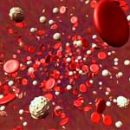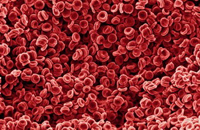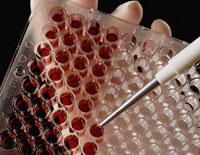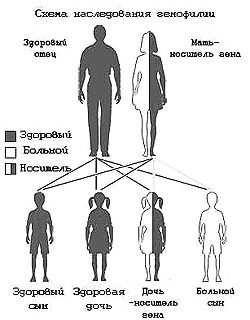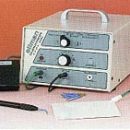The main task in the diagnosis of thrombocytosis is to determine the primary or secondary nature nature. When diagnosing thrombocytosis in childhood, both laboratory and instrumental examination methods are used.
Content
Diagnostic methods of thrombocytosis in children
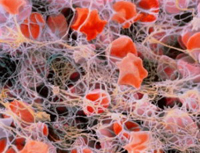 The primary task in the diagnosis of thrombocytosis in childhood is to establish the nature of the disease - primary or secondary. Send your doctor towards the correct diagnosis, complaints and symptoms of the disease, as well as data of the instrumental and laboratory examination of the patient in the hospital.
The primary task in the diagnosis of thrombocytosis in childhood is to establish the nature of the disease - primary or secondary. Send your doctor towards the correct diagnosis, complaints and symptoms of the disease, as well as data of the instrumental and laboratory examination of the patient in the hospital.
Standard biological research methods allow us to eliminate the most frequent causes of thrombocytosis in childhood: infectious, inflammatory and hematologic (mainly iron deficiency).
Visualizing research methods (radiography, computed tomography, ultrasound and magnetic resonance tomography) depending on the results of the survey, will eliminate the tumor cause of the disease. In the case of suspicion of primary thrombocytosis, a complete hematological examination is carried out with the obligatory inclusion of the myelogram and bone marrow biopsy.
Diagnosis of thrombocytosis at childhood:
- Determination of all indicators of blood formula
- Determination of the reactive protein C and values of the erythrocyte sedimentation speed
- Determination of the level of circulating iron and coefficient of saturation of erythrocytes transferrin or ferritin
- Determination of coagulation with the level of prombine
- Setting the time of activated cefalin and fibrinogen
- Determination of antibodies in suspected viral and parasitic nature of the disease
- Determination of the concentration of vitamins (E, group B)
- Ultrasound examination of the abdominal organs
- Radiography of the chest organs
- determination of the blood formula of the nearest relatives of the patient
- Selogram of bone marrow with cytological research
- Molecular bone marrow biology with the definition of medullary karyotype
- Determination of the level of thrombopoeatetin in the blood (hormone, stimulating ripening megacarocytes)
- Study of aggregation of thrombocyte
- Survey in thrombosis (recommended to exclude the risk factor added by thrombosis)
The duration of the development of thrombocytosis is also a diagnostic argument, in the case of transient thrombocytosis, which regresses with the treatment of the main reason, does not necessarily carry out all surveys. And, on the contrary, in the case of chronic thrombocytosis, in the absence of an obvious reason, a hematological examination is carried out.
Jet thrombocytosis is always well tolerated and only in exceptional cases lead to thrombotic consequences. The only prescribed therapy is the treatment of the cause, and there is no indication for the appointment of antiagregants - drugs that impede the gluing platelets and the formation of thrombus, besides, antiagregants destroy existing blood clots. Primary thrombocytosis is a much stronger lesion than reactive thrombocytosis, therefore the diagnosis of exception is carried out.

